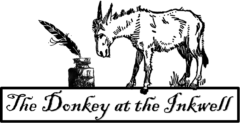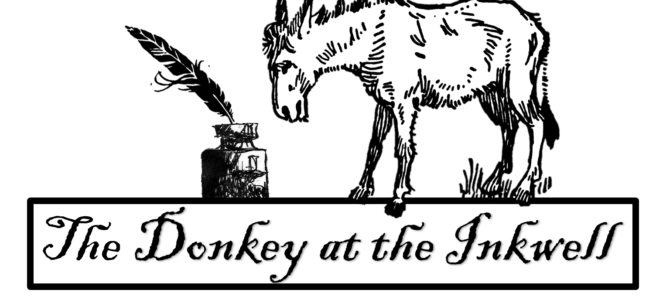The producers didn’t want them good. They wanted them Thursday.
Ronald Reagan on the poor quality of his B-movies
Last week, (<—hahahaha) I let slip the tantalizing title of this post: “The Algorithm Method.” What a clever title. It’s more than just clever; it’s so clever. Some might even say impossibly clever.
And tantalizing? Are you kidding? Look at it there, hovering above Ronald Reagan’s wise crack like a big, bouncy, flame-broiled, McMadison Avenue burger on a finally-employed-bachelor’s “totally lit” 85-inch 4K Ultra HD display. Are you not tantalized? Its tantaliciousness is turnt to 11.
This week, I come face to face with the stark reality that the problem with giving a brilliant title to a post you haven’t written is that readers selfishly expect the author to follow it up with a brilliant piece of writing. These unreasonable and, frankly, too high, expectations are murder on us creatives. You should be grateful that you’re getting anything at all. There are little pagan babies out there somewhere who don’t get so much as a tweet and you’re here looking for Ulysses. The nerve.
FINE. I’m just kidding. Welcome back. Thank you for being my reader, etc. etc. Please don’t leave.
What is the Algorithm Method?
The Algorithm Method is a half-baked idea that I have for fostering creativity in my life. The idea has two parents. Its fatherithm is the frustration I sometimes feel when wondering what to do next at any given moment and its motherithm is the desire to come up with a clever concept for a podcast.
A decade or so ago my friend John took me to a show called Dave Gorman’s Googlewhack Adventure. Here is a summary of the show from Wikipedia:
Dave Gorman’s Googlewhack Adventure is a stand-up comedy performance by Dave Gorman which toured between 2003 and 2005. The show follows Gorman’s life between his 31st and 32nd birthday: unable to write a novel, Gorman is distracted into travelling the world in search of a “chain” of ten Googlewhacks. A Googlewhack is a pair of words which yield exactly one result on Google, and Gorman’s aim is to meet ten people who are owners of the websites which the previous person’s Googlewhack leads to. The show uses Gorman’s usual style of incorporating charts and maps into a story with a ludicrous premise, and was created to pay back the publishers’ advance for his unwritten novel.
Wikipedia contributors. “Dave Gorman’s Googlewhack Adventure.” Wikipedia, The Free Encyclopedia. Wikipedia, The Free Encyclopedia, 26 Aug. 2018. Web. 11 Mar. 2019.
I loved the “ludicrous premise” of the show and thought it was a perfectly reasonable and delightful way to proceed in the face of crippling writer’s block. Writer’s block? Make a game of it! Can’t think of what to do next?Make a game of it! This makes complete sense to me. And, it works. If you follow the rules. (Aside: Did you know that the root of the word ludicrous is lūdere, “to play” in Latin?)
The Origins of the Method
I wrote a blog post a few years ago called “The Porpoise Driven Life” that addressed a similar idea. Let me essplain.
Dolphins sleep differently than we do. They are able to shut down half of their brains at a time and so, while one half is busy avoiding the infamously unsafe nets of tuna fishermen, the other half is snoozing away oblivious to any danger. After a while, the two sides switch until eventually the dolphin’s entire brain is rested and refreshed and Flipper can return to his regularly scheduled adventures.
I noticed that, upon rising in the morning, I was essentially operating on half a brain, but was still able to function if I followed a pre-established routine/checklist when I arose. “The Porpoise Driven Life” is what I chose to call this ability to operate in, ahem, dolphin “safe mode.” I am still proud of that awful pun.
Anyway, the Algorithim Method is essentially a reporpoised recycled version of that. It’s just for, you know, later in the day, so it’s totally different.
A Simple, Three-step Process
It’s a simple, three-step process (reminiscent of this) for never getting hung up what to do next:
- Step 1: Come up with an algorithm for how to determine your next action.
- Step 2: Do it.
- Step 3: Methodically.
Back in October when you last heard from me, I was following this advice with great results. My algorithm was pretty simple. Before bed I would make a to-do list for the next day in my bullet journal, then I would stage things around my house so that it would be hard to avoid doing those things and easy to do them.
The Process IRL
Here’s what how the process played out in real life:
- I wanted to exercise, so I dragged out the elliptical machine and put it in the middle of the room.
- I wanted to make sure I prayed, so I added the next day’s daily mass readings and In Conversation with God podcasts to my exercise playlist.
- I wanted to help my wife and kids get going in the morning, so I took out the pots and pans I needed to fix them breakfast.
- I wanted to foster my creativity, so I placed my open Morning Pages notebook and one of my favorite pens on my otherwise barren desk.
None of this is revolutionary, I know, but it helped me a lot. I lost 15 pounds, gained a great deal of self-confidence, and felt like I was finally getting my poop in a group. Then the holidays hit, chaos reared its ugly head, and I don’t want to talk about any of that because this post has already taken me four and a half months to finish.
A Creative Way to be Creative
With respect to creativity and, specifically, a podcast, my idea was to decide on some sort of algorithm for finding new guests to interview.
I am fascinated by people who are good at what they do. It amazes me that something I have no natural desire or innate ability to do can be a great source of joy/pride/satisfaction for someone else. Some day, I want to start a podcast dedicated to finding and interviewing people who are great at their work. When I do this, I think a good way of proceeding will be to interview someone I know for the first episode, but let the interviewee determine who I talk to next by recommending someone they’re impressed with.
Other creative applications for the method spring readily to mind:
- An artist’s algorithm could be 1) choose a subject 2) depict it in many different media–pencil, watercolor, sculpture, etc.
- A poet could set some arbitrary parameters for a poem and see what it yields. I did this myself with a series of poems / songs that I wrote. My algorithm was 1) choose a word that is a homophone or homograph and make that the title of a poem or song, 2) Refer to the other meaning of the word in the first line of the poem or song. For example, the first line of my song “Lessen” is “I have learned to let Love lead me where I did not want to go.” (Lessen / lesson.)
- A cook may try to make a meal made entirely of foods and spices beginning with the same letter.
- A couple hoping to spice up date night might create a list of every restaurant within x-miles of their house with a rating of x-number of stars and go through the list in alphabetical order.
You get the idea. Have fun with it. Let me know if you come up with anything clever.

